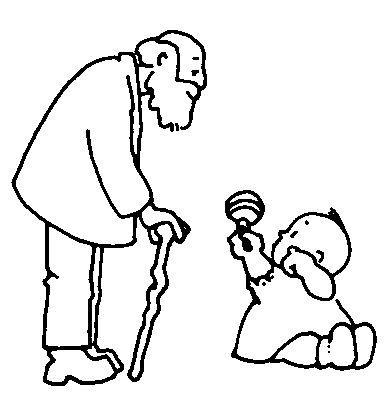Young or old – where is the line in aging?
The extensive illustration of aging umbrellas the ultimate changes any living being undergoes over their life. This may be seen in stages, descriptions of which can be found in early Greek literature from the time of Hippocrates, based primarily on observable biological changes in an individual throughout life – from infancy through to adolescence/adulthood and then finally end of life. However, aging is not just about the biological physical developments we experience. It also involves the coming of age, taking up bigger responsibilities and (perhaps for a lot of us one of the most important thing) gaining independence – letting go of our parents fingers and learning to fend for oneself.

Life is a journey where you stumble and fall. The strenuous expedition leads us to wrinkles, grey hair and physical decline – generally evident middle age. Although a never-ending on-going process, a lot could go wrong well before birth that could cause shocking anomalies in children.
Gerontology, derived from the Greek terminology geron meaning “old man” and logia meaning “study of”, is the study of the social, psychological and biological aspects of aging. It differs from the branch of medicine that investigates the development and progression of diseases in older adults. Gerontologists look for what distinguishes normal aging from disease.
Derived from the Greek language meaning “prematurely old” progeria is a rare but fatal genetic condition characterised by appearance of accelerated aging.
While there are different forms of this condition, the typical type is Hutchison-Gilford Progeria syndrome (first described by Dr. Jonathan Hutchison in 1886 and Dr. Hastings Gilford in 1897) which becomes evident at the beginning of childhood, although children ordinarily seem normal at birth and through infancy, with an average life expectancy of about 13 years. Werner’s syndrome (aka adult progeria) has a somewhat delayed onset. The rapid aging process does not start until the late teens with the individual living up to their 40s or 50s.
A teeny weeny tiny mistake in a particular gene causes it to transcribe an abnormal protein called progerin. When used up by cells, progerin causes cell death more easily. Accumulation of this protein is noted in numerous cells of affected children consequently causing them to physically age more rapidly.
Share your thoughts in the comment below and let us know what you think, and what we could add to this topic.





